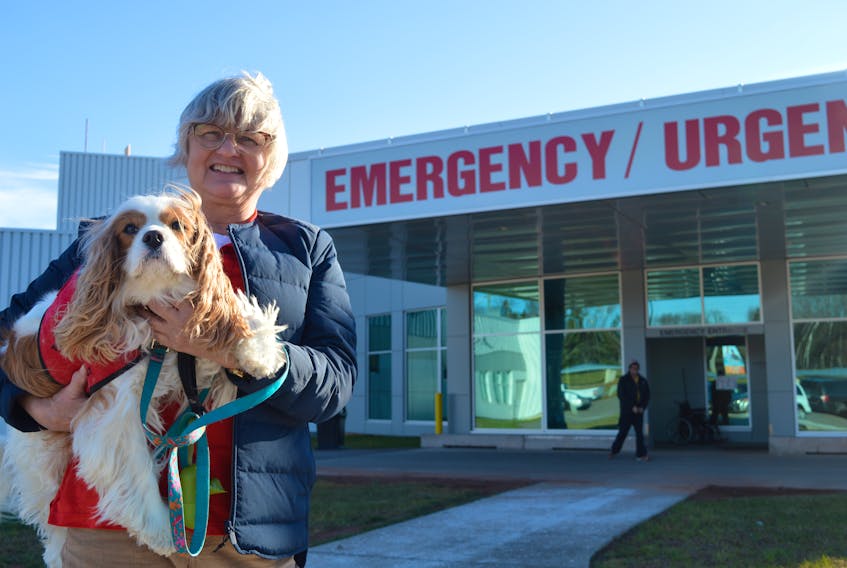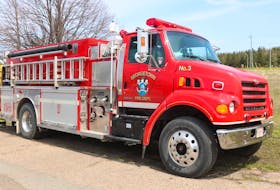Patients facing a long wait at a Charlottetown hospital are enjoying this little ‘paws’.
The Queen Elizabeth Hospital and Therapeutic Paws of Canada program have teamed up to bring in therapy dogs twice a week to help patients take their minds off their troubles, even briefly.
Donna Hassard, co-team leader with the Therapeutic Paws of Canada, said two handlers and their dogs spend an hour on Tuesdays and Wednesdays, between 3-4 p.m., in the hospital’s emergency room waiting area.
“Our dogs can only work for one hour per session as it’s very tiring for them, although they really enjoy it,’’ Hassard said. “Being petted and fawned over is tiring.’’
All dogs must go through a temperament test that Hassard describes as making sure they are “bomb proof’’.
“Nothing can bother them, and they can’t show any aggression at any time,’’ she said, noting that the dogs have to be able to tolerate screaming children and people poking and pulling at them. “They just have to be super calm and easy going.’’
Bonnie Shave, the other co-leader for Therapeutic Paws of Canada in P.E.I., said she was skeptical at first.
“But I was pleasantly surprised,’’ Shave said. “When we did start doing the visits, people were very receptive, especially the little kids.’’
Shave said signs are posted at the entrance to the emergency department warning patients that there are dogs present. The dogs also carefully placed in one corner of the waiting room so anyone who isn’t comfortable around dogs, or who has allergies, won’t be bothered.’’
Poll: What do you think of having therapy dogs in the ER?
And, she stressed the dogs are kept clean.
“They have to be kept clean and nails clipped. Our dogs are kept very tidy and well groomed.’’
Mike MacDonald, nurse manager at the QEH, said they conducted a survey of patients who interacted with the dogs soon after the program began as a pilot.
“The feedback was remarkable,’’ MacDonald said. “Everybody was so impressed with having the dogs in the department.’’
MacDonald said when a patient came in with a service dog about a year ago he and the hospital’s social worker noticed how people took an interest in the dog. So, they went looking for some sort of therapy dog program. Only one other hospital, in Saskatchewan, was doing it and had just started its program.
They looked into the Canadian Red Cross and St. John’s Ambulance before finding the P.E.I. chapter of Therapeutic Paws of Canada. The idea was then presented to hospital administration and infection control.
MacDonald thinks there’s value in expanding the program to other areas of the hospital.
“We have some areas we call quiet rooms where patients and families can go, a sitting room kind of thing. I’d like to see dogs back in that area first. It’ll be pretty difficult from an infectious control perspective to get the dogs into patient rooms, but that’s not to say in the inpatient rooms you couldn’t have a common area.
“I’m pretty sure I can demonstrate the value to it, no question. For us, as long as the dogs and the handlers are willing to come we’re willing to have them.’’
Hassard said cats are welcome to become part of the program and the group has its own Facebook page.
Twitter.com/DveStewart









